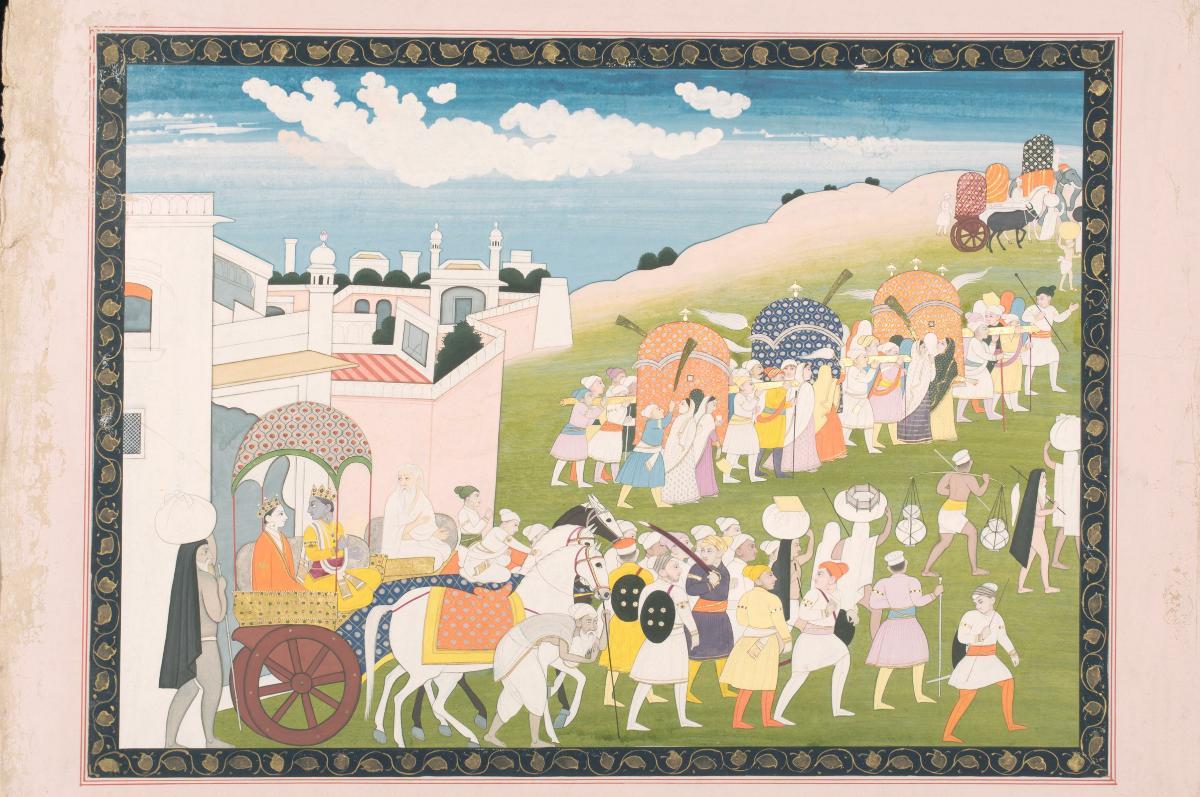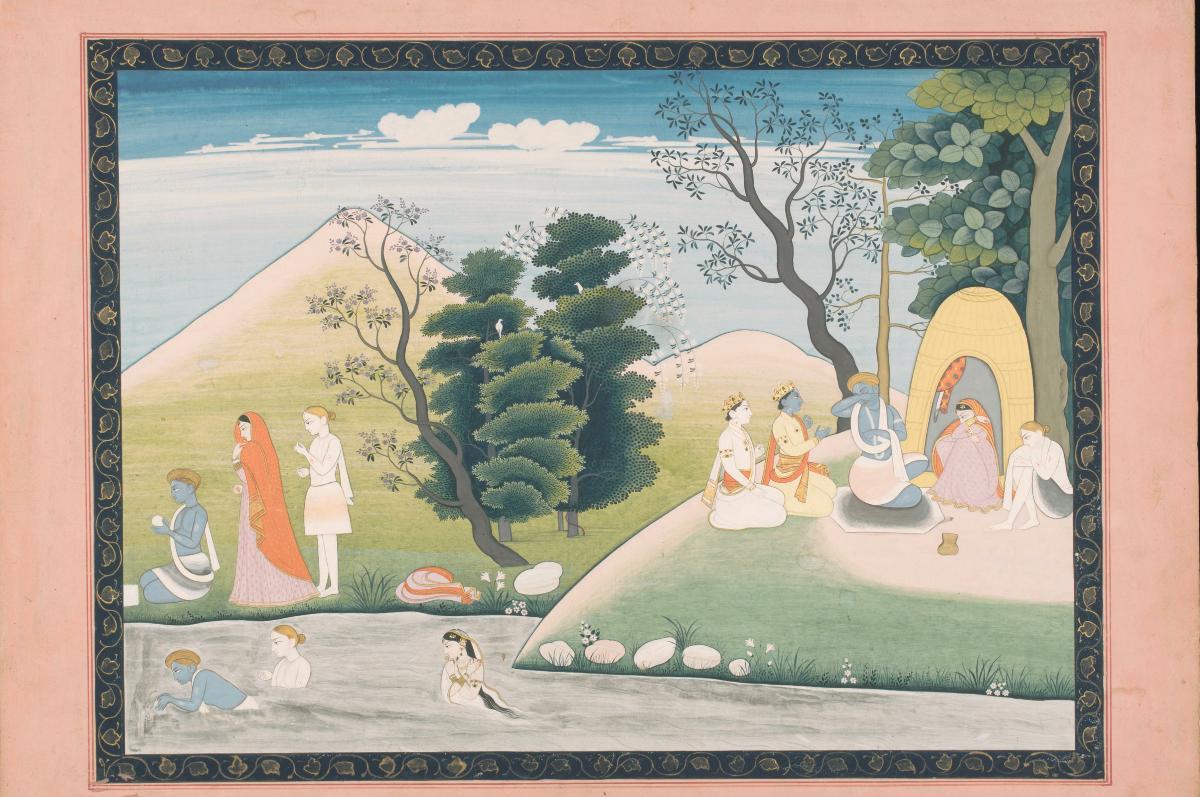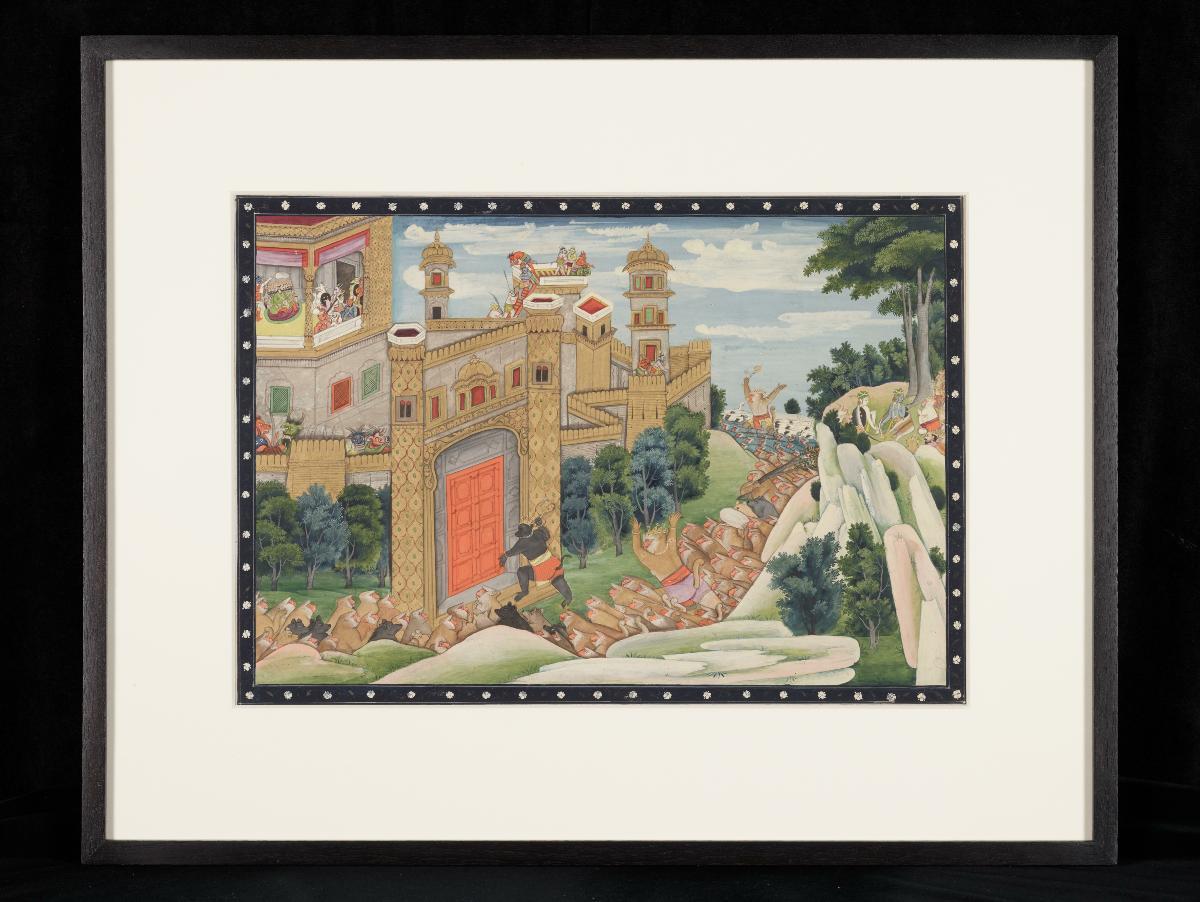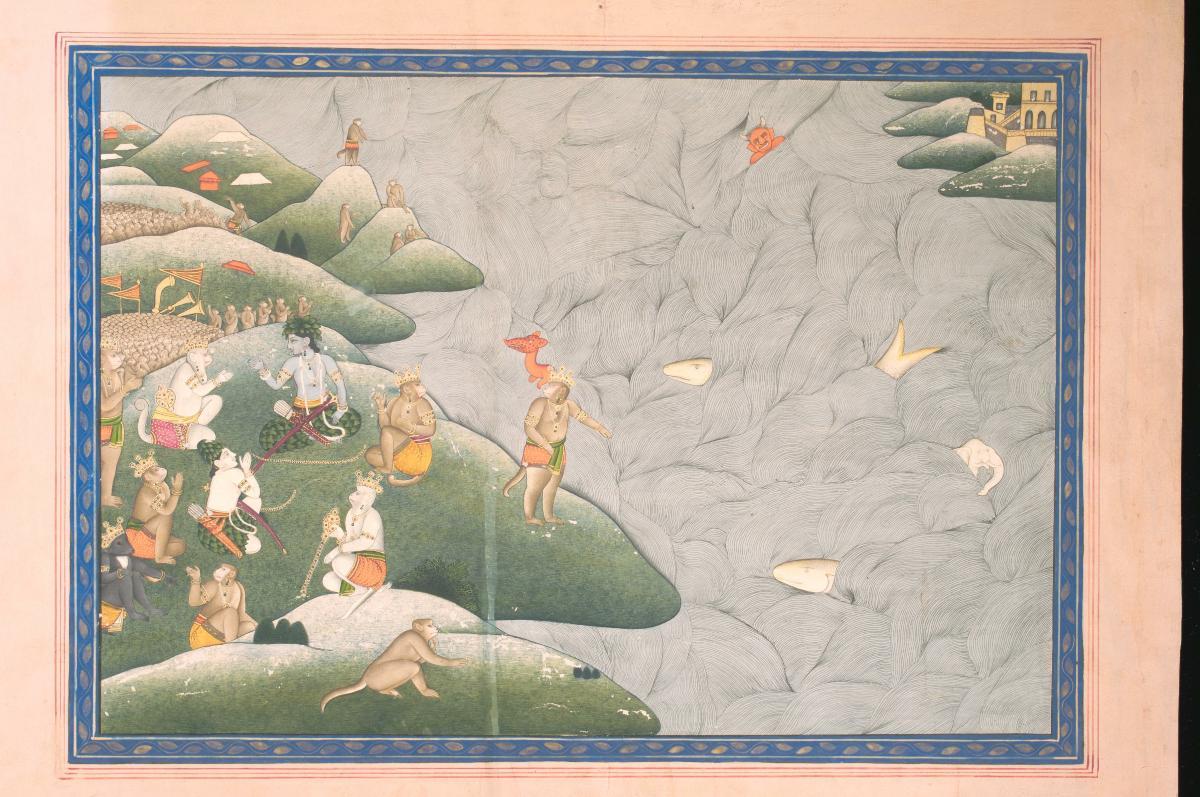This scene is from the Ayodhya kanda, the second chapter of the epic Ramayana. When Bharata and Shatrughna returned to Ayodhya, the capital city of Kosala kingdom, they received the news of the death of their father, King Dasharatha. They learnt about what had happened. Bharata was horrified to learn about his mother’s manipulation of king Dasharatha’s promise and Rama’s going away into exile along with Sita and Lakshmana. He decided to search for Rama and to restore him to the throne of Ayodhya.This painting shows a party leaving the city of Ayodhya in search of Rama. The procession provides a strong horizontal perspective to the painting. The two princes are in a chariot and Dasharatha’s three queens are being carried in palanquins, accompanied by men and women on foot.The importance of Ramayana is also seen in Indian manuscript paintings. The Kangra style represents the most glorious phase of Indian manuscript paintings in the Himachal Pradesh region. A Kangra painting is a product of number of processes like preparation of hand-made paper, preparation of natural colours, sketching and colouring. All these processes requires great amount of expertise and labour. Paintings such as this were commissioned by patrons for merit-making. Today there are very few painters practising this style and the art of Kangra painting is on the verge of extinction. There are some institutions working to ensure that the rich tradition of Kangra painting is preserved and is passed on to the future generation.















